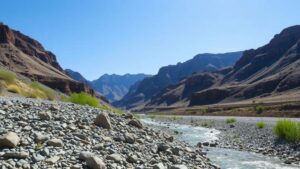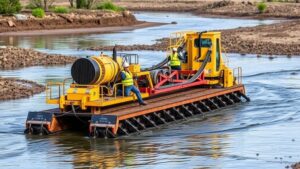Techniques for Processing Fine Sediments in Low-Flow Streams for Gold
Techniques for Processing Fine Sediments in Low-Flow Streams for Gold
Processing fine sediments in low-flow streams to extract gold is a unique challenge that requires specific techniques tailored to the environmental conditions. Low-flow streams generally have limited water volume, which can hinder traditional methods of gold extraction. But, with the right strategies, gold recovery from these sediments can be efficient and environmentally sound.
Understanding Fine Sediment Characteristics
Fine sediments are typically composed of particles smaller than 0.0625 mm in diameter, including silt and clay, and are often found in low-flow stream environments. Understanding the physical and chemical properties of these sediments is essential. Gold particles are denser than most sediment particles, which makes gravity separation feasible. But, the small size of fine sediments can cause challenges such as over-saturation and difficulty in effective separation.
Water Management Techniques
- Water Recycling: In low-flow scenarios, conserving and recycling water is crucial. Useing a closed-loop system can minimize water use while maximizing sediment processing efficiency.
- Seasonal Timing: Optimal processing may be achieved by timing efforts during periods of natural runoff or increased precipitation to enhance water availability.
Innovative Processing Techniques
A variety of processing methods can be adapted for fine sediments in low-flow streams:
- Floating Gold Dredges: By using small, remotely operated dredges, miners can extract sediments with minimal impact on the stream environment while effectively concentrating gold particles.
- Vortex Concentrators: These devices utilize centrifugal force to separate gold from sediments. The lighter sediment is expelled while the heavier gold is collected, offering an efficient solution for fine sediments.
Gravity Separation Methods
Gravity separation remains one of the most effective techniques for gold recovery, especially in low-flow environments:
- Shaking Tables: These tables use vibration and water flow to separate finer materials based on density, allowing for the effective recovery of gold from fine sediments.
- Pan Concentration: Manual panning can still be effective. Miners can adjust their techniques, using careful stratification and water manipulation to improve yield.
Environmental Considerations
The extraction of gold from low-flow stream sediments must be balanced with environmental protection. Using techniques that reduce sediment disturbance and protect aquatic habitats is essential. Sustainable practices may include:
- Buffer Zones: Establishing riparian buffer zones can help preserve local ecosystems and minimize the impact of gold extraction activities.
- Minimizing Chemical Use: Avoiding toxic chemicals, such as mercury, in processing methods is critical for environmental health.
Real-World Applications and Case Studies
Several regions have successfully implemented these techniques to recover gold from low-flow streams. For example, the Yukon Territory in Canada has adopted advanced gravity concentration methods in its placer mining sector, resulting in efficient recovery of gold while maintaining ecological integrity. Also, small-scale miners in the Amazon have begun utilizing eco-friendly methods of dredging and processing, yielding substantial amounts of gold while protecting the fragile rainforest ecosystem.
Conclusion and Actionable Takeaways
Effectively processing fine sediments in low-flow streams for gold requires a multi-faceted approach that combines innovative technology, environmentally responsible practices, and a solid understanding of the geological environment. Whether through water management techniques, advanced gravity separation methods, or rigorous environmental considerations, miners can achieve successful gold recovery while maintaining ecological balance.
To summarize, miners should:
- Use water-recycling systems to enhance efficiency.
- Explore advanced technologies like vortex concentrators and shaking tables.
- Adhere to sustainable mining practices to protect local ecosystems.


